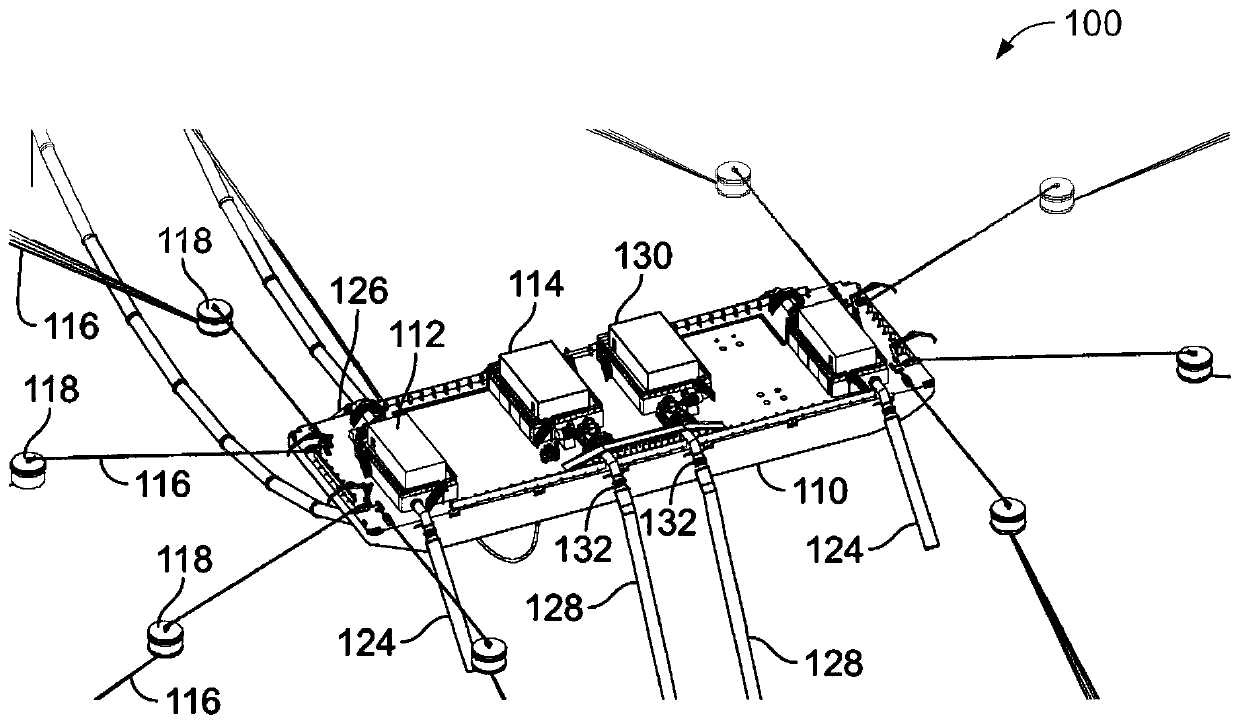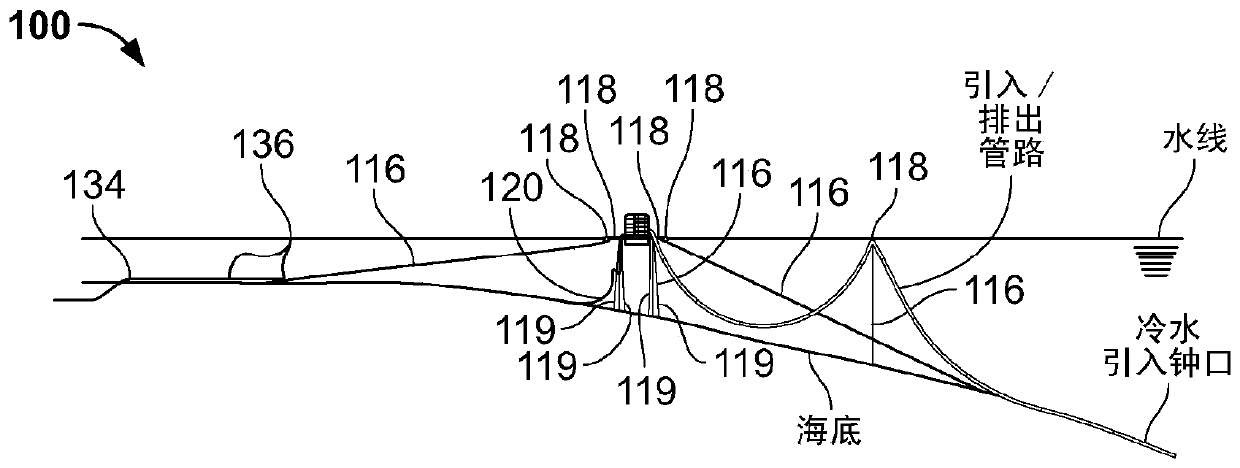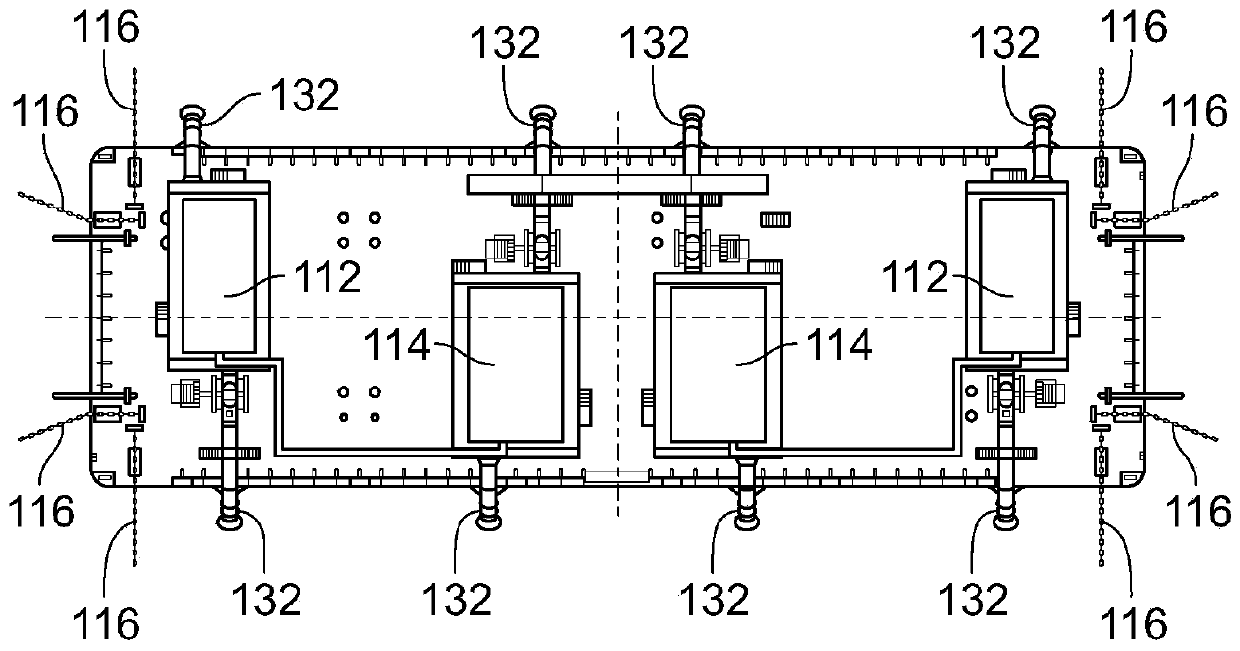Ocean thermal energy conversion system installed on ships
A technology of heat exchange plate and heat exchange unit, which is applied in ocean energy power generation, transportation and packaging, special-purpose ships, etc. It can solve problems such as the impact of fish schools and coral reef systems, the impact of marine environment, etc., and achieve the effect of ensuring electrification and development
- Summary
- Abstract
- Description
- Claims
- Application Information
AI Technical Summary
Problems solved by technology
Method used
Image
Examples
Embodiment Construction
[0061]The compact OTEC power plant can be installed on ships (eg barges) to serve island or shoreline utilities. OTEC power plants installed on ships can provide cost-effective power generation. The OTEC plant will also be able to provide battery storage systems, provide ancillary services to help stabilize and support the utility grid, and provide ride-through and ramp up capabilities during periods of utility grid frequency and voltage fluctuations. Ship-mounted OTEC power plants are capable of operating under normal weather and sea conditions, and can withstand hurricane conditions (eg, up to Category 3 hurricanes). Mooring systems, piping systems and transmission lines can be constructed to work in and have low impact to the local environment.
[0062] The facility for the ship-mounted OTEC power plant is configured to provide a mooring site for the ship-mounted OTEC power plant at 100 feet to 300 feet underwater. The seabed profile of a particular site determines the ex...
PUM
 Login to View More
Login to View More Abstract
Description
Claims
Application Information
 Login to View More
Login to View More - R&D
- Intellectual Property
- Life Sciences
- Materials
- Tech Scout
- Unparalleled Data Quality
- Higher Quality Content
- 60% Fewer Hallucinations
Browse by: Latest US Patents, China's latest patents, Technical Efficacy Thesaurus, Application Domain, Technology Topic, Popular Technical Reports.
© 2025 PatSnap. All rights reserved.Legal|Privacy policy|Modern Slavery Act Transparency Statement|Sitemap|About US| Contact US: help@patsnap.com



